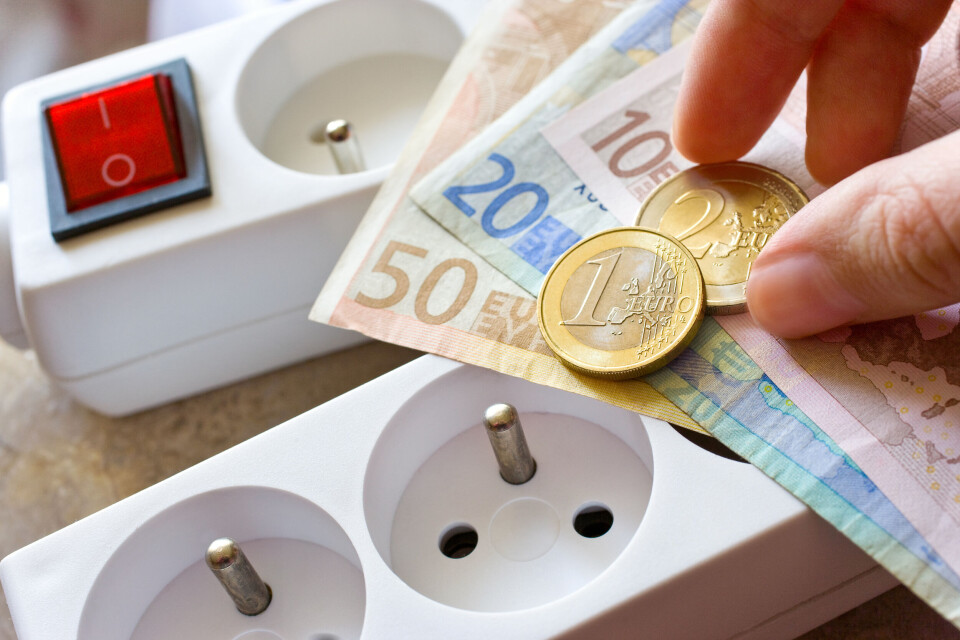-
Electricity bills to remain stable for most homes in France, says government
Significant rises are not forecast for customers on regulated tariffs in next two years
-
How can I find out who the owner of a property is in France?
There are a few methods you can use to ascertain ownership
-
Will we have to pay back any of the French Aspa pension top-up money we have received?
Benefit can become repayable after a recipient’s death
Why do my French electricity bills keep rising despite competition?
A combination of taxes, supply quotas and high demand for raw materials is driving an increase in electricity tariffs. We explore what you can do to combat climbing energy tariffs

I don’t understand why my electricity bills constantly go up. There are more and more providers and competition so shouldn’t that help the prices go down?
The cost of electricity in France has increased sharply, and nearly one in two 18 to 34-year-olds struggle to pay their bills according to the government information service, Médiateur national de l’énergie.
Energy prices continue to rise for a number of reasons, despite attempts to drive down prices by introducing competition into the market.
Read more: Gas, electricity, petrol: See how your bills are rising in France
Électricité de France and Gaz de France (later Engie) maintained a monopoly over French electricity and gas provision until 2007, when residential customers were able to opt for smaller competitors for the first time.
As the market flooded with offers from around 50 alternative providers, one might have expected that prices would come down. However, in reality tariffs have risen by more than 50% since 2007.
Customers with a high electricity consumption (9 kVA of power over 8,500 kWh of use) have seen average prices rise from €522 to €981, at a rate climbing three times faster than that of inflation.
Between 2015 and 2017, alternative suppliers were able to offer tariffs that were 15% cheaper than the government-regulated rates applied by EDF. Since then the potential saving has stuck at 6-7%.
In March 2021, consumer group Consommation, logement, cadre de vie (CLCV) called for a return to a single, centralised electricity and gas provider.
However, the opening of the market is not to blame for price rises according to Dominique Jamme, managing director of the Commission de régulation de l’énergie (CRE).
“The cost of electricity in France is lower today than it was in 1996,” she said. “Prices went down in the ‘90s and until 2010, before beginning to rise sharply in 2015.”
What has caused the price increase?
Taxes
Until 2016, the growth in energy rates was in large part due to changes in the taxes applied to bills.
The contribution tarifaire d’acheminement (CTA), which goes towards the pension of those employed by electricity providers, has risen by 38% since its creation in 2005.
Consumers also have to pay VAT, as well as a third tax, the contribution au service public de l’électricité (CSPE), introduced in 2003.
In recent years, CSPE has been used to fund the development of renewable energy sources, which has proved costly.
This caused rates to climb from €2/MWh in 2003 to €22.50/MWh in 2016, by which time taxes made up 35% of all bills.
This prompted the government to cap the amount that could be charged under CSPE, but in 2020 this tax still accounted for €8.4billion of the total amount paid in electricity bills.
While CTA, VAT and CSPE form one third of electricity tariff rates, the second third is made up of a tarif d’utilisation du réseau public d’électricité (Turpe), which goes up by about €15 per year.
Therefore, competing electricity suppliers can only really offer savings on the final third of a consumer’s bill, which concerns the cost of electricity provision itself.
Even this is impacted by hidden charges such as the cost of certificats d’économie d’énergie, which providers must fund and which has been increasing in recent years.
A false sense of competition
An accès régulé à l’électricité nucléaire (regulated access to nuclear electricity or Arenh) was introduced for all providers by the 2011 ‘Nome’ law.
This means that alternative suppliers do not have unlimited access to nuclear energy; they can buy up to 25% of all nuclear production (100 TWh) from EDF at €42 per MWh.
If they need more electricity than this quota can provide, they must rely on the constantly shifting state of the wider market.
In 2021, smaller companies have ordered 146 TWh of nuclear electricity, 46 of which they have had to buy from the wider market at a rate of €65/MWh.
This increased outlay has had a knock-on effect on tariffs, which will only continue to rise if the market price climbs – as predicted – to €78/MWh in 2022.
The CRE is considering increasing the Arenh tariff to €48/MWh. However, it also hopes to allow alternative suppliers to access up to 150 TWh, a move which would better protect customers from the fluctuations of the market.
The cost of raw materials is rising
The price of oil, gas and coal is going up, and as we move into winter and demand increases, more countries will need to depend on these materials to maintain their electricity supply.
In addition, for every tonne of CO2 emitted by fossil fuel power stations, producers must pay a fee under the European Union Emissions Trading System. This fee has risen from €10 per tonne in 2018 to €50 per tonne in 2021.
The more that people in France opt for alternative suppliers, the less easy it is for these companies to access nuclear energy as a result of the quotas in place. This means that they have to resort to fossil fuels, pay the EU carbon tax and put their prices up.
Read more: France brings in ‘price protection’ measures amid soaring energy rates
How can I keep my electricity bills down?
- Always compare the tariffs offered by different providers. There are various comparison sites available, but the official government service can be found here. Avoid private sites which may be paid commission by one operator or another.
Be wary of cold callers and remember that you can always cancel a new contract up to 14 days after signing it.
- You can use a Linky meter, which will track your electricity use habits and show you its findings online, perhaps helping you to control your consumption.
- There are some companies which now offer deals à tarification dynamique, which means that their rates are constantly changing along with demand and market trends.
Customers will be able to view the way that their tariff will fluctuate for each hour of the following day, allowing them in some cases to choose when they use electricity to avoid peak times and higher prices. This might be useful for people who charge their electric vehicles overnight.
- Other companies also provide offres d’effacement whereby consumers can reduce the power of their electricity supply for a short period of time during peak times. This will not greatly impact a person’s comfort: a 30-minute-long reduction will only bring one’s heating down by one degree.
- Weekend discounts such as Vert Électrique week-end from EDF and Soir et week-end d’Ohm Énergie could benefit second home owners who only visit their property at certain times.
- Médiateur national de l’énergie states that 60% of people in France have chosen in the past to turn their heating down to reduce their energy costs.
Reducing the temperature by just one degree can save you up to 7% on your bill, according to Alain Bazot, the president of consumer group UFC-Que Choisir.
Read more: ‘We changed our French electricity supplier and saved €1,000 a year’
Related stories
Three million homes face gas bill rises of up to 12.6% in France
French consumer group demands VAT reduction ahead of gas price rise
2022 French Presidential candidates divided over nuclear energy
























